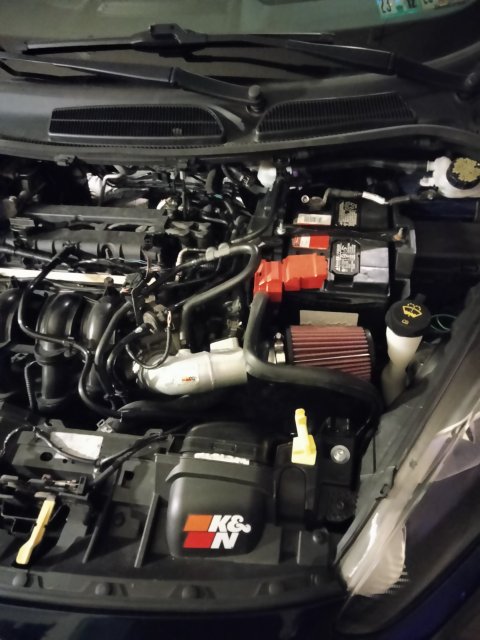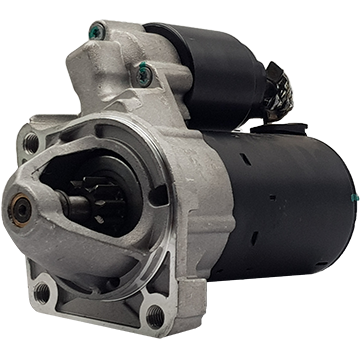Discover the Latest Ford Fiesta Engine Upgrades for Enhanced Power
Opening the Power of Engines: A Comprehensive Guide to Performance and Efficiency
Understanding the intricate technicians of engines is essential for both performance fanatics and everyday drivers. The responses might redefine our approach to engine performance and effectiveness in methods that are both enlightening and necessary.
Understanding Engine Fundamentals
What comprises the fundamental mechanics of an engine? At its core, an engine is an equipment created to convert fuel right into power via a collection of regulated explosions or burning processes. The main parts consist of the cyndrical tube, piston, crankshaft, camshaft, and valves. The cylinder serves as the chamber where combustion occurs, while the piston relocates within the cyndrical tube to convert the energy from combustion right into direct motion (ford fiesta engine).
The crankshaft then transforms this linear activity into rotational energy, which inevitably powers the vehicle. The camshaft controls the opening and closing of the shutoffs, managing the intake of air and fuel and the expulsion of exhaust gases. Additionally, the engine relies upon a very carefully calibrated fuel-air combination, ignition system, and cooling down system to guarantee optimal efficiency and effectiveness.
Comprehending engine basics also involves identifying the importance of engine cycles, such as the four-stroke cycle, which consists of consumption, compression, power, and exhaust strokes. Each stage is critical in ensuring the engine works efficiently and successfully. Proficiency of these essential auto mechanics prepares for discovering much more complicated engine dynamics and performance metrics, crucial for optimizing both power outcome and performance.
Trick Performance Metrics
Key performance metrics are important for assessing an engine's efficiency and power result, providing important insights for both consumers and makers. These metrics function as standards for engine performance, permitting notified decisions in style, acquiring, and production.
Among the primary metrics is horse power, which evaluates the engine's capacity to carry out job over time. Torque, measured in pound-feet, is an additional crucial metric that shows the engine's rotational force, straight affecting velocity and towing capability. Fuel efficiency, typically measured in miles per gallon (MPG) or liters per 100 kilometers (L/100km), examines just how efficiently the engine transforms gas into motion, affecting ecological considerations and operational costs.
Furthermore, thermal performance measures how well an engine transforms fuel energy into useful work, revealing insights right into energy losses mostly through heat. Emission degrees, including carbon dioxide and NOx, are likewise important, mirroring the engine's environmental effect and compliance with regulative criteria.

Tuning Techniques for Performance
Tuning techniques play a substantial function in enhancing engine efficiency by enhancing performance metrics identified in earlier discussions (ford fiesta engine). Various approaches exist to fine-tune an engine, each contributing to enhanced gas economy and decreased emissions
One efficient strategy is readjusting the air-fuel proportion, ensuring the engine runs within the optimal combustion regime. A leaner combination can improve fuel effectiveness, yet it must be balanced to avoid misfires or engine knock. Furthermore, reprogramming the engine administration system can recalibrate parameters such as ignition timing, which further improves performance while maintaining power output.
An additional essential strategy involves changing the consumption and exhaust systems. Upgrading to high-performance air filters and exhaust headers can decrease back stress, facilitating much better airflow. This permits the engine to take a breath even more easily, you could try this out causing improved burning effectiveness.
In addition, the execution of advanced tuning tools, like dyno screening, offers exact information that enables targeted changes. On a regular basis keeping track of these performance metrics guarantees that adjusting efforts produce the wanted performance results. Collectively, these strategies not only bolster engine efficiency however additionally add to long-term sustainability in engine operations.
Maintenance for Ideal Performance
Routine engine maintenance is essential for accomplishing optimal performance and durability. A well-maintained engine not just runs efficiently however also minimizes the threat of expensive repair services and break downs. Secret components requiring regular focus consist of oil, filters, belts, and ignition system.
Transforming the engine oil at suggested intervals is essential, as oil lubricates moving components and avoids getting too hot. Replacing oil and air filters ensures that pollutants do not harm engine function. Disregarding these components can cause minimized performance and possible engine damage.
Additionally, checking and replacing worn belts and hose pipes is crucial to protect against sudden failures. Timing belts, in certain, must be changed according to the supplier's schedule to avoid catastrophic engine damage.
Glow plugs should additionally be examined and changed as click here for info necessary, because they play a crucial duty in ignition and fuel performance.
Future Trends in Engine Modern Technology
Accepting innovations in innovation, the future of engine style is poised to transform performance and performance throughout different applications. Hybrid and totally electric powertrains are coming to be significantly traditional, providing decreased discharges and boosted gas effectiveness.
Furthermore, advancements in materials science are causing lighter, stronger components that improve engine efficiency while minimizing energy consumption. Advanced manufacturing techniques, such as 3D printing, permit the development of complex geometries that boost airflow and thermal administration, thus maximizing combustion processes.
In addition, the assimilation of expert system and artificial intelligence is readied to transform engine diagnostics and performance adjusting. These innovations can examine vast quantities of data in real time, allowing predictive maintenance and customized efficiency improvements.
Final Thought
In final thought, unlocking the power of engines requires a thorough understanding of their auto mechanics and efficiency metrics. Implementing efficient adjusting techniques and sticking to routine maintenance techniques considerably enhance engine abilities.
Furthermore, the engine counts click site on a meticulously calibrated fuel-air blend, ignition system, and cooling system to make sure ideal efficiency and efficiency.
Understanding engine basics additionally entails acknowledging the importance of engine cycles, such as the four-stroke cycle, which includes consumption, power, exhaust, and compression strokes. Proficiency of these essential technicians lays the foundation for exploring more complex engine dynamics and efficiency metrics, important for maximizing both power output and efficiency.

Accepting innovations in technology, the future of engine design is positioned to transform efficiency and performance throughout various applications.